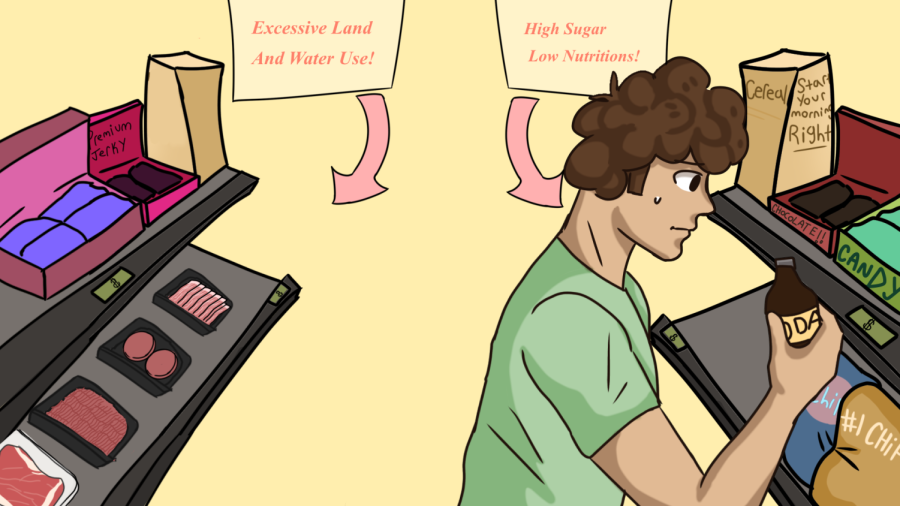[Opinion] Agricultural practices unnecessarily accelerate climate change
Most items at the grocery store are full of harmful ingredients or are made with harmful methods of production. They are high in sugar, overly processed or overexert the land.
February 13, 2023
With rising temperatures, the extinction of a great number of species and an increase in severe storms, climate change is not some far-off concept; it is already affecting almost every aspect of our planet.
Climate change is accelerated by the burning of fossil fuels such as coal and oil. There are numerous economic sectors that use large amounts of fossil fuels including one somewhat unexpected sector: food production.
As it turns out, the food that we eat and how that food is produced not only affects the health of our bodies, but also the health of the planet. The U.S. food system relies almost exclusively on non-renewable energy sources, using nearly 20% of the fossil fuels in the U.S. according to the United Nations.
There are four main parts to the food production process: agriculture, transportation, processing and handling. In the agricultural part of the process, raising animals requires food that could instead be used as produce, and water, where nearly 20% of freshwater globally is diverted to animal production.
Animals, like cattle, often require extensive grasslands, which are typically created by cutting down trees, releasing carbon dioxide stored in forests. Both the cattle’s waste on pastures and chemical fertilizers used on crops for feed emit nitrous oxide, another powerful greenhouse gas. Livestock takes up nearly 80% of global agricultural land, yet produces less than 20% of the world’s supply of calories.
After the agriculture stage, food is transported to supermarkets or processing facilities. Air freights, container ships, railways and road transport each require energy. While some foods such as nuts and grains are ready to eat immediately after transportation, many others require further processing which often occurs in food processing plants that use electricity and emit carbon dioxide. Food handling is the final step and includes packing and refrigerating food, as well as restaurants and food retail, which also takes up a lot of energy.
Even after the food is sold, there is yet another issue that accelerates climate change: food waste. According to the USDA, each year, 119 billion pounds of food is wasted in the United States.
Considering that the food production process consumes 10.11 quadrillion British Thermal Units of energy, where a quadrillion BTU is about equal to the amount of energy in 45 million tons of coal, this amount of food waste can negatively impact the environment. Additionally, spoiled food tends to end up in landfills and produces large amounts of methane–a greenhouse gas that is more potent than carbon dioxide. Our planet can not handle this level of consumption for much longer.
Despite the ongoing issues with food production, it is not too late to make a change. You can limit your carbon footprint by limiting the amount of meat you eat. Beef produces the most greenhouse gas emissions. Plenty of plant-based alternatives are available as healthy, less wasteful alternatives. Additionally, locally grown products travel a shorter distance to markets than products that come from other areas, creating less pollution and fewer carbon emissions. Foods sold at farm stands generally waste less on packaging as well.
To cut down on your food waste, bring a list when you go food shopping and stray away from buying items that you do not need. When eating out, bring your own containers to save your leftovers as opposed to using plastic or Styrofoam containers provided by restaurants.
There are a wide variety of simple changes that can make a major impact in reducing greenhouse gas emissions. There is no planet B for when our planet can no longer support life; now is the time to make a change.
This story was originally published in the February 2023 Eagle Eye print edition.












